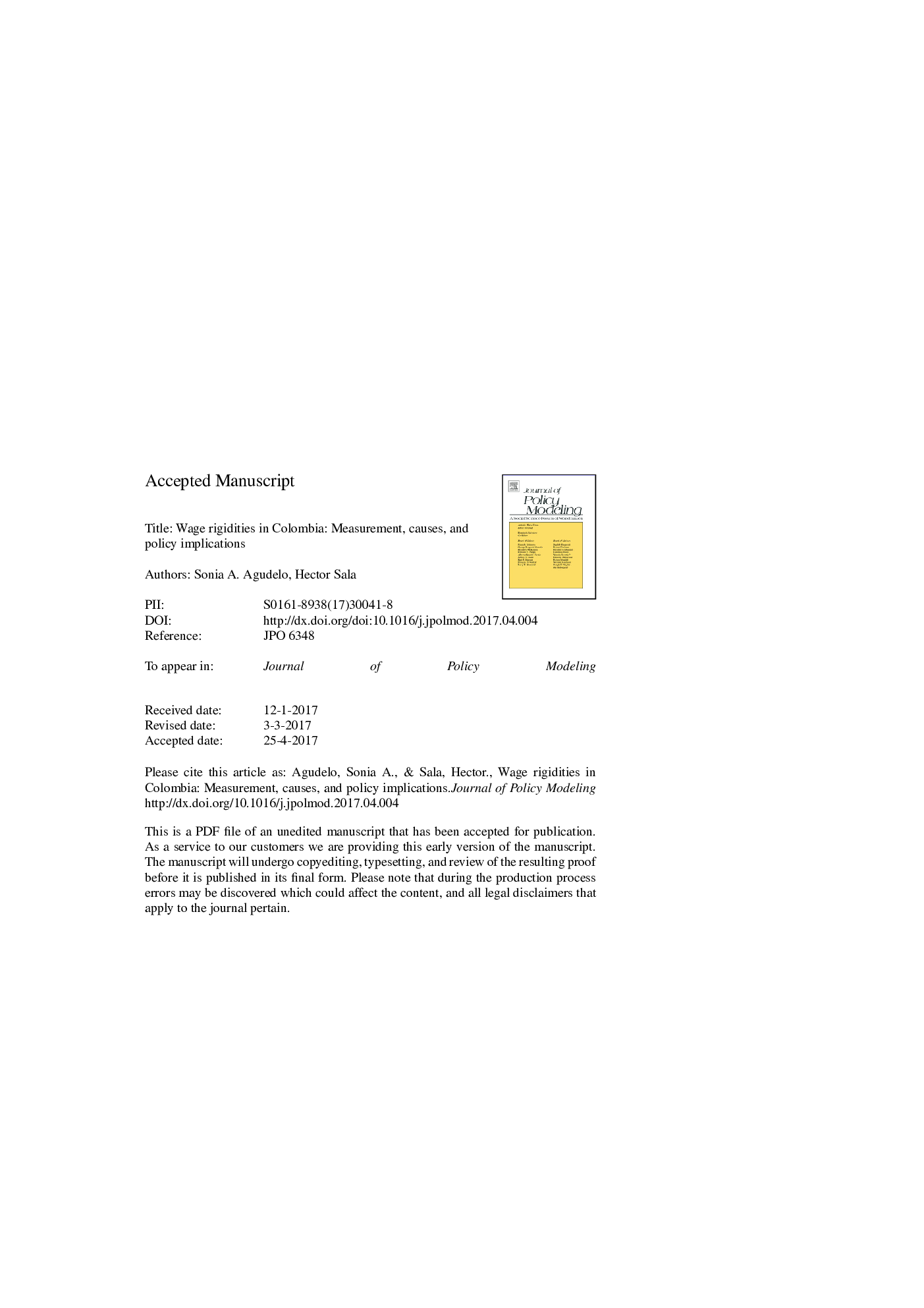| Article ID | Journal | Published Year | Pages | File Type |
|---|---|---|---|---|
| 5101669 | Journal of Policy Modeling | 2017 | 26 Pages |
Abstract
This paper evaluates the extent of wage rigidities in Colombia over a period, 2002-2014, in which the fall in unemployment was relatively slow with respect to sustained economic growth. Following Holden and Wulfsberg (2009), we compute a measure of downward real wage rigidity (DRWR) of 12.09%, four times bigger than their aggregate estimate for the OECD economies. Moreover, in contrast to the evidence for the advanced economies, the determinants of such rigidities show no connection to the wage bargaining system. Amid the absence of effective labor market institutions to make rigidities less prevalent, economic growth appears as the most powerful mechanism to ward them off. Under this light, we provide a stylized description of the wage setting rule in Colombia, compare it with the common one in the advanced economies, and call for a far-reaching reform of the Colombian wage bargaining setup.
Related Topics
Social Sciences and Humanities
Economics, Econometrics and Finance
Economics and Econometrics
Authors
Sonia A. Agudelo, Hector Sala,
